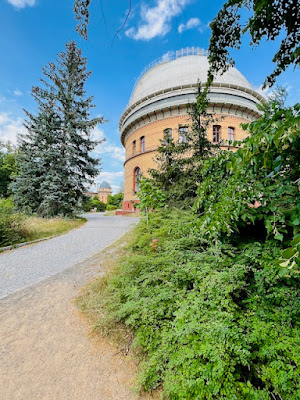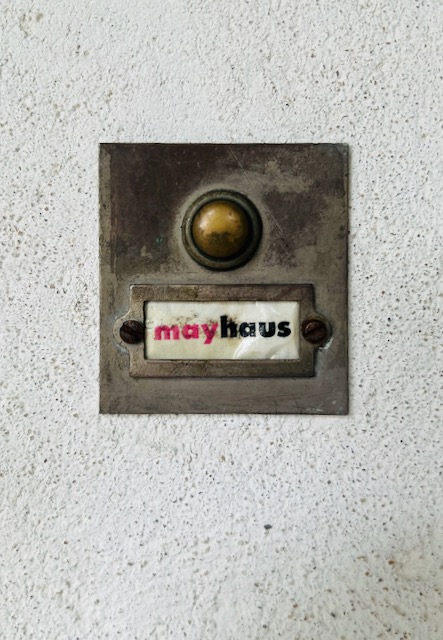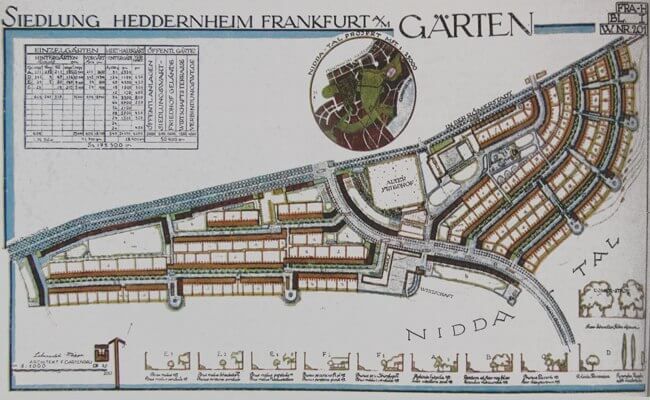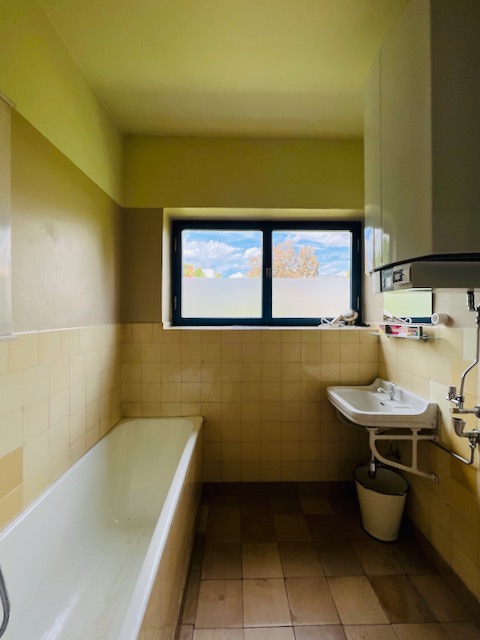Erich Mendelsohn is probably best known for the Einsteinturm, the Einstein Tower, designed in 1917, built between 1919 and 1921, and opened in 1924 in Potsdam, Germany. A masterpiece of Expressionism, the tower served (and still serves) as a solar observatory. Mendelsohn designed it to reflect Einstein's theory of relativity, and it was built to help test Einstein's theory. The tower was at the end of a restoration and not available for touring, but proudly reflected the sun in all its organic glory. The building is located on the gorgeously wooded grounds of the Leibniz Institute for Astrophysics with roots to the Berlin Observatory established in 1700.
Whether we were supposed to or not, we drove all the way into the grounds to the Tower. Behind us as we gawked at the tower were several historic buildings that used to house observatories, one of which (the one with three domes) now houses the Potsdam Institute for Climate Impact Research. We wandered around the grounds before heading into the heart of Berlin.




























.jpeg)












